social contagion
description: behavior, emotions, or conditions spreading spontaneously through a group or network
55 results
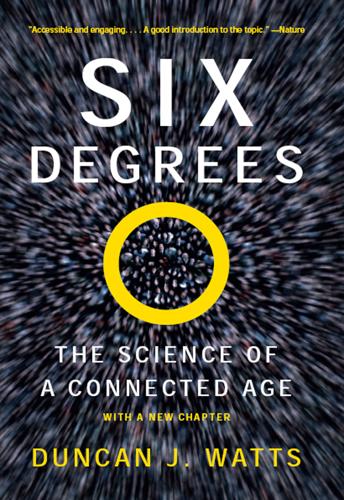
Six Degrees: The Science of a Connected Age
by
Duncan J. Watts
Published 1 Feb 2003
These were all good questions, but as I dug deeper into the problem, it became obvious that the answers weren’t going to come easily. Social contagion, it turns out, is even more counterintuitive than biological contagion, because in threshold models, the impact of one person’s action on another’s depends critically on what other influences the latter has been exposed to. In disease spreading, as already pointed out, we don’t have to worry about this effect because every contagion event can be considered independently of any other. But in social contagion, it makes all the difference in the world. An isolated group of people—a religious cult like the Branch Davidians, for example—can maintain completely implausible beliefs as long as they remain in a context where they can continually reinforce each other and prevent each other from interacting with the outside world.
…
And for the same reason—that network connectivity, rather than the resilience of individual decision makers, is the principal obstacle to a successful cascade—it is also true that in poorly connected networks, highly connected individuals are disproportionately effective in propagating social contagion. This second observation reflects standard diffusion-of-innovations thinking, according to which opinion leaders and centrally situated actors are considered the most effective promoters of a new idea, practice, or technology. For example, in his recent book, The Tipping Point, the writer and journalist Malcolm Gladwell emphasizes the role that highly connected individuals play in social contagion, where his use of the term tipping point corresponds roughly to the notion of a global cascade.
…
As discussed earlier, the more people whose actions or opinions you take into account before making a decision, the less influence any one of them will have over you. So when everyone is paying attention to many others, no single innovator, acting alone, can activate any one of them. This feature of social contagion is what sets it apart from biological contagion, where a susceptible individual’s contact with a single infective has the same effect, regardless of how many other contacts the susceptible has had. In social contagion, remember, it is the relative number of “infected” versus “uninfected”—active versus inactive—neighbors that matters. So although highly connected networks might seem, on the surface, to favor the propagation of all sorts of influence, they do not necessarily support cascades of social influence.
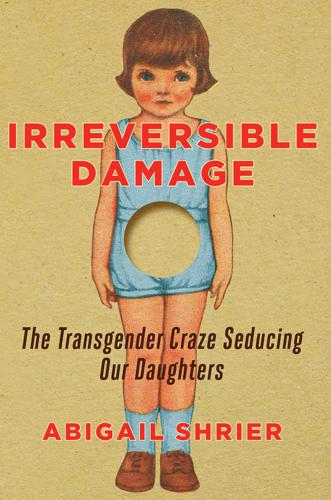
Irreversible Damage: The Transgender Craze Seducing Our Daughters
by
Abigail Shrier
Published 28 Jun 2020
It’s closer to a pound of flesh. Some small proportion of the population will always be transgender. But perhaps the current craze will not always lure troubled young girls with no history of gender dysphoria, enlisting them in a lifetime of hormone dependency and disfiguring surgeries. If this is a social contagion, society—perhaps—can arrest it. No adolescent should pay this high a price for having been, briefly, a follower. CHAPTER ONE THE GIRLS If you’re an American born before 1990, the words “teenage girls” likely invoke a clutch of young women giggling at the mall. Backs against the pile carpet of a bedroom floor, hair splayed, listening to a song on repeat while conversation runs a similar circuit, chasing some ambiguous interaction with a boy or a girl.
…
This is the idea developed by historian of psychiatry Edward Shorter, and popularized by journalist Ethan Watters: Patients are drawn to “symptom pools”—lists of culturally acceptable ways of manifesting distress that lead to recognized diagnoses.¹³ “ ‘Patients unconsciously endeavor to produce symptoms that will correspond to the medical diagnostics of the time,’ ” Watters credits Shorter with discovering.¹⁴ “Because the patient is unconsciously striving for recognition and legitimization of internal distress, his or her subconscious will be drawn toward those symptoms that will achieve those ends.”¹⁵ Many social contagions are spread this way. Hong Kong, for instance, had never experienced an epidemic of what Westerners call “anorexia”—girls, captivated by a belief that they are fat, engaging in self-starving. Not until 1994, that is, when local media widely publicized the story of a girl whose tragic death was interpreted by news outlets as an example of an unfamiliar Western ailment called anorexia nervosa.
…
That is not to say that Buck Angel doubts the potential benefit of medical transition. On the contrary, he believes it saved his life. But he also believes that we’re never going to be able to help those who actually need it if we’re fast-tracking transition for troubled girls caught up in a social contagion. “I had to go through many hoops to be able to be here today. I had to go to mental health care. I had to get a note. I had to do this whole step-by-step process, which enabled me to have a secure transition.” It isn’t a process he resents. It’s a process that he believes prepared him mentally for the life he now leads.
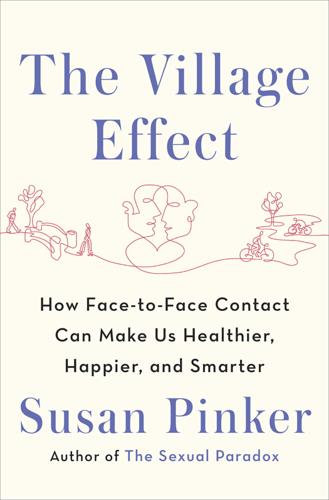
The Village Effect: How Face-To-Face Contact Can Make Us Healthier, Happier, and Smarter
by
Susan Pinker
Published 30 Sep 2013
The Reverend Henry Melvill, 1856 Contents Cover Title Page Copyright Epigraph Introduction People Who Need People 1. Swimming Through the School of Hard Knocks How Social Bonds Can Rejig the Outcome of Chronic Disease 2. It Takes a Village to Raise a Centenarian Longevity as a Team Sport 3. A Thousand Invisible Threads Face-to-Face Contact and Social Contagion 4. Who’s Coming to Dinner Food, Drink, and Social Bonds 5. Baby Chemistry How Social Contact Transforms Infants’ Brains 6. Digital Natives Electronic Devices and Children’s Language Development, School Progress, and Happiness 7. Teens and Screens How Digital Technology Has Transformed Teens’ Lives 8.
…
Whether Sarah’s generation will provide the TLC that her relatives require to live to one hundred is anyone’s guess. But when your spouse and your friends—and even your children—have died, people decades younger who call you il tesoro can make a world of difference. But what if you don’t happen to live in an isolated mountaintop village? 3 A Thousand Invisible Threads Face-to-Face Contact and Social Contagion Out of seven billion people in the world, six billion think religion helps them live a long, meaningful life—and science tells us they’re onto something. People who practice a religion are happier, healthier, and live longer than atheists, according to a mountain of empirical evidence.1 One seven-year study of ninety thousand women from across the United States found that those who attended religious services at least once a week were 20 percent less likely to die.
…
There are also other incentives to ensure that an extended family’s babies are clustered by age. Social scientists call these subtle influences “network externalities,” which is just a fancy way of saying that the fun and benefit of doing things together outweighs doing them alone. Could something other than social contagion be at the root of the sibling baby boomlet that follows a sister’s first child? Siblings who are two years apart in age might naturally space their children the same way, for instance, so that the pattern mimics the domino effect. Or perhaps sibs explicitly plan to have children in close succession, thus creating a little soccer team for their extended families.

Global Financial Crisis
by
Noah Berlatsky
Published 19 Feb 2010
The Greed of Financial Institutions Caused the Crisis Oskari Juurikkala 27 Financial institutions wanted large profits, therefore they hid the risks they were taking from regulators. Better regulations are important, but businesspeople need to be more responsible and less greedy. 3. “Boom Thinking” Caused the Crisis Robert J. Shiller 32 Boom thinking is a kind of social contagion; once a commodity starts rising in price, people convince themselves and then each other that the price will keep going up. This happened in the United States with home prices, which rose to unsustainable levels. 4. The Weakness of Banking Regulations Caused the Crisis Vince Cable Some British banks have grown too big to fail, and perhaps too big for regulators to handle.
…
Shiller Robert J. Shiller is a professor of economics at Yale University and an economics columnist for the New York Times. In the following viewpoint, Shiller says that the boom in mortgage lending was fueled by a belief that housing prices would rise indefinitely. Shiller calls this belief a “social contagion”—an epidemic of a certain kind of thinking. Since people believe prices will go up, they spend more money, pushing prices further up, and convincing others to spend. Regulators and experts also tend to be caught up in the enthusiasm, creating a speculative bubble that can have complicated and disastrous effects.
…
See Credit risks 45, 87, 88–90, 178, 208, 211– 212 Bad debt Iceland, 18, 102–106 Japan, 1990s, 207 249 The Global Financial Crisis Islamic insulation, 164–169 Philippines, 151–153 regulation repeals/blockages as cause of crisis, 42–52, 205– 206 subprime mortgage dealings, 17–18 See also Bailouts; Bank nationalization; Capital ratios; Guaranteed deposits; Liquidity crises Barclays Capital bank, 44, 46, 47–48 Basis Capital, 88 Baugur, 105 Bear Stearns, 17–18, 49 Bernanke, Ben, 54, 173, 177 Boeri, Tito, 53–58 Bolivarian Alternative for the Americas, 184, 196 Bolivia, 161 Bonds corporate, within crisis, 175– 176, 220 Islamic banks, 167–168, 169 Japanese market, 214 suggestion for EU, 97, 99–100 Bonuses, executives, 29, 43, 45, 46, 49 Boom and bust cycles, 59, 61 “Boom thinking,” as cause of crisis, 32–41 Booth, Jenny, 22–26 Brazil, 161–162 BRIC meetings, 146–147 free trade, 180, 184 trade partners, 144, 184 BRIC summits, 146–147 Britain. See United Kingdom Brown, Gordon, 26, 46, 47, 60, 108, 110, 111, 113–114 250 Bubbles “rational,” 39–40 real estate, and social contagion, 35–36, 38–41 real estate, U.S., 16–17, 32, 34, 38–39 real estate, world, 18, 87, 209– 210 stock market, 41, 87 technology economy, 56–57 Building industry economic growth contributions, 34 slowdowns, 131, 133 Bulgaria, 95, 98, 99 Bunning, Jim, 202 Business failures, 19 Business subsidies, 201, 202–206 “Buy American” provisions, stimulus plans, 181–182 C Cable, Vince, 42–52 Calderón, Felipe, 182 California, homelessness, 75, 76–77 Campaign contributions, 201, 206 Canada, 80–84 Canada Mortgage and Housing Corporation, 82 Capital ratios, 103, 216–217, 221, 227 Caribbean, 160–161 Carmody, Sean, 85–91 Cash.
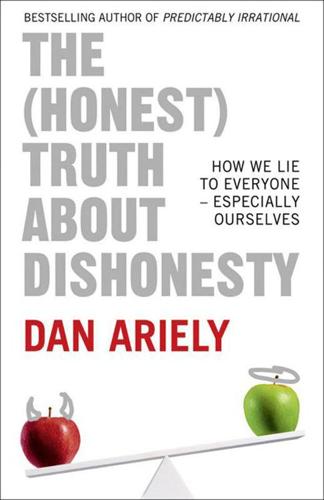
The (Honest) Truth About Dishonesty: How We Lie to Everyone, Especially Ourselves
by
Dan Ariely
Published 27 Jun 2012
Pittsburgh has two world-class universities, the University of Pittsburgh (UPitt) and Carnegie Mellon University (CMU). Like many institutions of higher learning that are in close proximity, these two have a long-standing rivalry. This competitive spirit was just what we needed to further test our cheating-as-a-social-contagion hypothesis. We conducted all of these experiments at Carnegie Mellon University, and all our participants were Carnegie Mellon students. In the basic Madoff condition, David had worn just a plain T-shirt and jeans and had therefore been assumed to be a Carnegie Mellon student, just like all the other participants.
…
But I do worry about the existence of essay mills and the signal that they send to our students—that is, the institutional acceptance of cheating, not only while they are in school but after they graduate. How to Regain Our Ethical Health? The idea that dishonesty can be transmitted from person to person via social contagion suggests that we need to take a different approach to curbing dishonesty. In general, we tend to view minor infractions as just that: trivial and inconsequential. Peccadilloes may be relatively insignificant in and of themselves, but when they accumulate within a person, across many people, and in groups, they can send a signal that it’s all right to misbehave on a larger scale.
…
For example, Sherron Watkins of Enron, Coleen Rowley of the FBI, and Cynthia Cooper of WorldCom are great examples of individuals who stood up to internal misconduct in their own organizations, and in 2002 Time magazine selected them as People of the Year. Acts of honesty are incredibly important for our sense of social morality. And although they are unlikely to make the same sensational news, if we understand social contagion, we must also recognize the importance of publicly promoting outstanding moral acts. With more salient and vivid examples of commendable behavior, we might be able to improve what society views as acceptable and unacceptable behaviors, and ultimately improve our actions. CHAPTER 9 Collaborative Cheating Why Two Heads Aren’t Necessarily Better than One If you’ve ever worked in just about any organization, you know that working in teams accounts for a lot of your time.

The Happiness Industry: How the Government and Big Business Sold Us Well-Being
by
William Davies
Published 11 May 2015
It is well known that a great deal of research investment in behavioural science and ‘decision research’ during the 1950s was driven by military imperatives of the Cold War.14 The University of Michigan, which has been a leading centre of this research since World War Two, and occupies a central place in the evolution of behavioural economics, is a regular recipient of defence-related research contracts, to better understand teamwork and decision-making in combat situations. The science of ‘social contagion’, to which the 2014 Facebook mood manipulation experiment contributed, also has links to US defence interests. The Pentagon’s Minerva Research Initiative was launched in 2008 to gather social scientific knowledge on issues and regions of strategic importance to the United States.15 This included a contract with Cornell University to investigate how civil unrest spreads as a social contagion. One of the recipients of Minerva funding at Cornell was communications professor Jeffrey Hancock, who was also one of the researchers on the Facebook study.
…
Sharing is preferable to selling, so long as it doesn’t interfere with the financial interests of dominant corporations. Appealing to people’s moral and altruistic sense becomes the best way of nudging them into line with agendas that they had no say over. Brands and behaviours can be unleashed as social contagions, without money ever changing hands. Empathy and relationships are celebrated, but only as particular habits that happy individuals have learnt to practise. Everything that was once external to economic logic, such as friendship, is quietly brought within it; what was once the enemy of utilitarian logic, namely moral principle, is instrumentalized for utilitarian ends.
…
See positive psychology promise of practical utility of, 91 reunion of with economics, 64, 182 social psychology, 125, 189, 266 theory of, as balancing act, 67 The Psychology of Advertising (Scott), 86 psychopharmacology, 162 psychophysical parallelism, 259 psychophysics, 29, 30, 31 psychosomatic interventions/management/programmes/theories, 122, 124, 128, 135 psychotherapy, 124, 127 pulse rate, 25, 26, 27, 37, 79 punishment, 16, 19, 22, 23, 179, 183, 239 PwC, 119 Qualia, 36 quality of life measures, 126 quantitative sociological research, 98 quantified community, 233, 234 quantified self apps, 221 quantified self movement, 221, 228 quants, 237 questionnaires, 165, 175, 176 random acts of managerial generosity, 184 randomized sampling methods, 97 Rapley, Mark, 250 Rayner, Rosalie, 93 Reagan, Ronald, 144, 149, 159 Realeyes, 72 real-time health data, 137 real-time social trends, 224 recessions, 67–8, 252 Recognizing the Depressed Patient (Ayd), 164 reductionism, 27, 264 research ethics, 91–2, 225 resilience training, 35, 273 Resor, Stanley, 93–4, 95, 96 retail culture, 58 Ricard, Matthieu, 2, 4 Robbins, Lionel, 154 Robins, Eli, 169 Rockefeller Foundation, 97, 99, 121 Rogers, Carl, 146 Roosevelt, Franklin, 101, 146 Rowntree, Joseph, 99 RunKeeper, 240 Ryanair, 185 Salter, Tim, 110 sampling methods, 97–8 Santa Monica, California, 4 São Paolo, Brazil, Clean City Law, 275 scales, 146, 165, 175, 176 scanning technology, 75–6 scent logos, 73 Schrader, Harald, 44 scientific advertising, 215 scientific management, 118–19, 120, 136–7, 235 scientific optimism, 242 scientific politics, 77, 88, 145 scientists, as source of authority, 147–8 Scott, Walter Dill, 83, 85 screen time, 207 second brain, 231 secular religions, 260 selective serotonin reuptake inhibitors (SSRIs), 163, 166 self-anchored striving, 147, 166, 175 self-anchoring striving scale, 146 self-forming groups, 200 self-help gurus, 210 self-help literature, 247 self-improvement, 212 self-monitoring, 258 self-optimization, 213 self-reflection, 211 self-surveillance, 221, 230 Seligman, Martin, 165, 277n5 Selye, Hans, 128–31, 133, 264 The Senses and the Intellect (Bain), 48 sentiment analysis/tracking, 6, 221, 223, 261 sexual orientation disturbance, 172 sharing economy, 188 shopping, 58, 74, 93, 188, 239 sick notes, 112 Sing Sing prison, 201 Smail, David, 250 smart cities, 220, 224, 239 smart homes, 239 smart watches, 37 smartphones, 10, 207, 222, 230 smiles/smiling, 36–7, 38 Smith, Adam, 49, 50, 52, 55 social, 1, 36, 184, 186, 187, 188, 190, 191, 203, 204, 205, 207, 208, 211–12 social analytics, 188, 191, 193, 196 social capitalism, 212 social contagion, science of, 257 social economy, 190 social epidemiology, 9, 250, 254 social media, 188, 189, 199, 203, 207, 208–9, 213, 224, 261, 274 social media addiction, 206, 207 social network analysis, 204, 208 social networks, 193, 194, 195, 196, 213, 225 social neuroscience, 193, 195, 213, 214 social obligation, 184 social optimization, 181–214 social prescribing, 194, 212, 246, 271 social psychology, 125, 189, 266 social research, 98, 202, 226 social science, as converging with physiology into new discipline, 195 sociology, 254 sociometric analysis, 199 sociometric maps, 202 Sociometric Solutions, 239 sociometry, 199, 201, 202, 203 Spengler, Oswald, 121 Spitzer, Robert, 171–3, 176, 271 sponsored conversations, 189 sport, as virtue for political leaders, 140 sporting metaphors, 141 SSRIs (selective serotonin reuptake inhibitors), 163, 166 St Louis school of psychiatry, 169, 170, 171, 173, 174, 176, 179 Stanton, Frank, 99 Stigler, George, 150, 152, 153, 156–7, 158, 160 stress, 37, 129, 130, 131, 132, 133, 175, 250, 262, 272, 273 Stuckler, David, 252 subjective affect, science of, 6, 7 subjective feelings, relationship with external circumstances, 254 subjective sensation, 30, 45, 55, 61 Suicide (Durkheim), 227 Sully, James, 59, 84 surveillance, 231, 237, 238, 240, 242.
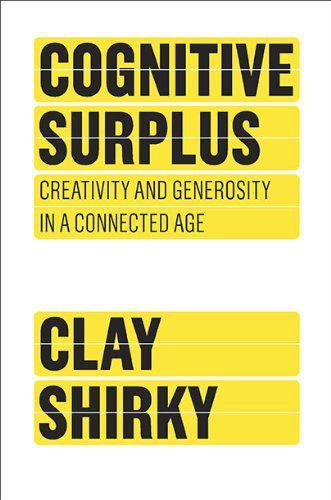
Cognitive Surplus: Creativity and Generosity in a Connected Age
by
Clay Shirky
Published 9 Jun 2010
rules Rustichini, Aldo Ryan, Richard Ryerson University Safire, William satisfaction scale scarcity versus abundance Schmittberger, Rolf Schwarze, Bernd scientific method self-governance selfishness senior citizens, new media tools and Shakesville blog sharing amateurs versus professionals and Apache and as cheating civic sharing communal sharing cost of culture and as default digital networks and frozen sharing limitations on market pricing versus media as means of medical information and Napster and opportunities and personal sharing as social motivation social production and See also making and sharing Shaw, Steven SixDegrees.com skateboarding social capital social change social contagion social media adapting broadcast media versus connectedness and coordination and dynamics of growth and effective group performance and intrinsic motivation and launching limits on lolcats membership and sharing and PickupPal pooled free time and public address and quality of publication and rules versus design and scale and social contagion and unexpected behavior and Ushahidi Wikipedia social motivation connectedness as fines and generosity as gratitude and membership as sharing as verbal feedback as social networks social norms social production combinability and culture and group/individual desires and market culture versus scale and sharing and See also making and sharing social surrogacy Soma puzzle experiment Sooky, Valerie South Korea, beef protests in Sri Ram Sene stability of media environment Stanca, Luca Stern, Howard Stone, Katherine study groups Stutzer, Alois suburbanization success Susan, Nisha Swados, Harvey Tavernise, Sabrina technology behavior and personal social change and television audiences and concept of costs of viewing free time and happiness and loneliness and materialism and production and consumption and social interactions and social surrogacy and young people and Tetzel, John theory-induced blindness Tomasello, Michael Torvalds, Linus traditionalists traditions versus accumulated accidents trust, between men and women Twitter Ultimatum Game U.S.
…
Seen in this light, the Responsible Citizens are not just cleaning up trash—they are attempting to demonstrate positive civic engagement to the people they know, and to the people those people know, and to the people those people know. It’s too soon to handicap the long-term effects of the Responsible Citizens, but without social contagion, their task would be hopeless. With it, their work may help create social change even among strangers. We create one another’s opportunities, whether for passivity or for activity, and we have always done so. The difference today is that the internet is an opportunity machine, a way for small groups to create new opportunities, at lower cost and with less hassle than ever before, and to advertise those opportunities to the largest set of potential participants in history.

Networks, Crowds, and Markets: Reasoning About a Highly Connected World
by
David Easley
and
Jon Kleinberg
Published 15 Nov 2010
Both diseases and ideas can spread from person to person, across similar kinds of networks that connect people, and in this respect, they exhibit very similar structural mechansisms — to the extent that the spread of ideas is often referred to as “social contagion” [84]. Having considered the diffusion of ideas, innovations, and new behaviors in Chapter 19, why then are we revisiting this topic afresh in the context of diseases? In the context of our discussions here about networks, the biggest difference between biological and social contagion lies in the process by which one person “infects” another. With social contagion, people are making decisions to adopt a new idea or innovation, and our models in Chapter 19 were focused on relating the underlying decision-making processes to the larger effects at the network level.
…
We will also find that the diffusion of technologies can be blocked by the boundary of a densely-connected cluster in the network —a “closed community” of individuals who have a high amount of linkage among themselves, and hence are resistant to outside influences. Cascading behavior in a network is sometimes referred to as “social contagion,” because it spreads from one person to another in the style of a biological epidemic. Figure 1.12 reinforces this analogy; it shows the beginning of a tuberculosis outbreak [17] and forms a visual counterpart to the social cascade in Figure 1.11. There are fundamental differences in the underlying mechanisms between social and biological contagion — social contagion tends to involve decision-making on the part of the affected individuals, whereas biological contagion is based on the chance of catching a disease-causing pathogen through contact with another individual.
…
Figure 1.11 shows a small example, 24 CHAPTER 1. OVERVIEW Figure 1.11: When people are influenced by the behaviors their neighbors in the network, the adoption of a new product or innovation can cascade through the network structure. Here, e-mail recommendations for a Japanese graphic novel spread in a kind of informational or social contagion. (Image from Leskovec et al. [267].) in which e-mail recommendations for a particular Japanese graphic novel spread outward from four initial purchasers. By reasoning about the underlying network structure, we will see how it becomes possible for a superior technology to displace a universally-used but inferior one, if the superior technology starts in a portion of the network where it can make progress incrementally, a few people at a time.

Finance and the Good Society
by
Robert J. Shiller
Published 1 Jan 2012
Those of you deciding to pursue careers as economists and nance scholars need to develop a better understanding of asset bubbles—and better ways to communicate this understanding to the nance profession and to the public. As much as Wall Street had a hand in the current crisis, it began as a broadly held belief that housing prices could not fall—a belief that fueled a full-blown social contagion. Learning how to spot such bubbles and deal with them before they infect entire economies will be a major challenge for the next generation of finance scholars. Equipped with sophisticated nancial ideas ranging from the capital asset pricing model to intricate options-pricing formulas, you are certainly and justi ably interested in building materially rewarding careers.
…
The regulators quickly go after small-time crooks, Markopolos argued, but when it comes to large companies, they are “captive to the companies they are supposed to regulate.” Markopolos uncovered substantial evidence that the massive hedge fund run by the respected Wall Street gure Bernard Madoff was nothing more than a Ponzi scheme, a fraudulent investment scheme built on a plan for social contagion of enthusiasm among investors. The fund was eventually exposed in 2008. But Markopolos had complained about Mado ’s scheme to the SEC as early as 2000. In 2005, three years before the ultimate collapse of the scheme, Markopolos presented a twenty-one-page document to SEC New York Branch Chief Meaghan Cheung and explained his ndings.
…
. … Thus if the animal spirits are dimmed and the spontaneous optimism falters, leaving us to depend on nothing but a mathematical expectation, enterprise will fade and die;—though fears of loss may have a basis no more reasonable than hopes of profit had before.”8 My colleague George Akerlof and I were so convinced of the importance of these uctuations in animal spirits, and of their importance in the world economic crisis, that we wrote a book about it, entitled Animal Spirits.9 Fluctuations in animal spirits that are shared by large numbers of people are, we argued, social phenomena, the result of epidemic social contagion, which makes these uctuations very hard to comprehend and predict. Some of the inherent fragility of our decision-making process can be appreciated if we look introspectively, as we consider our own decisions about whether to launch some risky and time-consuming endeavor. There is a distinct emotional avor to any such decisions.
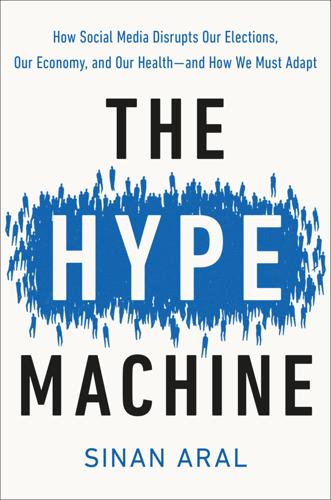
The Hype Machine: How Social Media Disrupts Our Elections, Our Economy, and Our Health--And How We Must Adapt
by
Sinan Aral
Published 14 Sep 2020
Finance, September 27, 2019, https://www.msn.com/en-us/money/topstocks/influencing-set-to-become-dollar10b-industry-by-2020/vi-AAHWrRc. To understand Obama’s influence, we’d have to know: Gregory Ferenstein, “Dear Klout, This Is How You Measure Influence,” TechCrunch, June 6, 2012, http://techcrunch.com/2012/06/21/science-social-contagion-klout/. This means thinking about behavior change rather than behavioral tendencies: Sinan Aral, “Commentary—Identifying Social Influence: A Comment on Opinion Leadership and Social Contagion in New Product Diffusion,” Marketing Science 30, no. 2 (2011): 217–23, http://mktsci.journal.informs.org/content/30/2/217.abstract. Dylan Walker and I wanted to untangle that hair ball: Sinan Aral and Dylan Walker, “Identifying Influential and Susceptible Members of Social Networks,” Science 337, no. 6092 (2012): 337–41, http://www.sciencemag.org/content/337/6092/337.
…
Thomas, and Sonia Hausen, “Disintermediating Your Friends: How Online Dating in the United States Displaces Other Ways of Meeting,” Proceedings of the National Academy of Sciences 116, no. 36 (2019): 17753–58. how the digital breadcrumbs we leave on social dating sites: Ravi Bapna et al., “One-Way Mirrors in Online Dating: A Randomized Field Experiment,” Management Science 62, no. 11 (2016): 3100–122. gifting of Chinese Red Packets on WeChat: Yuan Yuan et al., “Social Contagion of Gift Exchange in Online Groups,” arXiv:1906.09698v2 (2019). “emotional contagion”: Adam D. I. Kramer, Jamie E. Guillory, and Jeffrey T. Hancock, “Experimental Evidence of Massive-Scale Emotional Contagion Through Social Networks,” Proceedings of the National Academy of Sciences 111, no. 24 (2014): 8788–90.
…
Milkman, “What Makes Online Content Viral?,” Journal of Marketing Research 49, no. 2 (2012): 192–205. “We were amazed at how quickly Hotmail spread”: Steve Jurvetson, “What Exactly Is Viral Marketing?,” Red Herring 78 (2000): 110–12. a large-scale randomized experiment on Facebook: Sinan Aral and Dylan Walker, “Creating Social Contagion Through Viral Product Design: A Randomized Trial of Peer Influence in Networks,” Management Science 57, no. 9 (2011): 1623–39. “$527,000 in a month or almost $6.4 million in a year”: Rachel Strugatz, “Bloggers and Digital Influencers Are Reshaping the Fashion and Beauty Landscape,” Los Angeles Times, August 10, 2016.
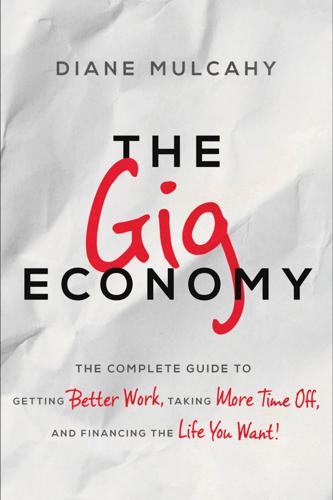
The Gig Economy: The Complete Guide to Getting Better Work, Taking More Time Off, and Financing the Life You Want
by
Diane Mulcahy
Published 8 Nov 2016
Nicholas Christakis and James Fowler, professors at Harvard, spent significant time mapping the social connections of the 50-year-long Framingham Heart Study, which has followed more than 15,000 people over the course of their lives. The study offers evidence that behaviors and attitudes spread socially among groups of friends and even friends of friends. They called this phenomenon “social contagion” and found that smoking, drinking, obesity, happiness, and even loneliness appeared to spread socially. They also document how creativity, wealth, political views, violent tendencies, and happiness spread through social networks.13 The authors concluded that we’re influenced not just by the attitudes, feelings, and behaviors of our immediate circle of friends but also by people within three degrees of separation from us (i.e., our friends’ friends’ friends).
…
life insurance Limited Liability Corporation (LLC) loss aversion Maker’s Schedule Manager’s Schedule marketing, for new jobs Marsh, Nigel Mastermind Dinners (Gaignard) material wealth, vs. personal fulfillment MBA students, planning by McDonald’s mental tasks, combining with physical Merchant, Nilofer MetLife, Study of the American Dream Microsoft middle class impact of home ownership middle managers Mihalic, Joe Mint.com Moment money, perspective on mortgage mortgage calculator National Labor Relations Act National Labor Relations Board (NLRB) negative cash flow net worth, in principal residence networks maintaining 99designs Obituary exercise offer in connecting 168 Hours (Vanderkam) opportunity, income security from opportunity mindset outbound connecting Outliers (Gladwell) overconfidence ownership, vs. access paid leave part-time side gigs passion, pursuing in time off passive income Peers.org pension plans personal branding personal burn rate personal fulfillment, vs. material wealth perspective, time off to change Pew Research Center physical tasks, combining with mental pilot tests planning for best-case scenario in financial flexibility for time off playtime portfolio of gigs building for experiments learning by doing opportunity for connections Postmates power, and expanding time predictors of future feelings priorities checkbook diagnostic exercise on extended family as of others, impact of private sector, job creation decline pro-bono legal adviser Proctor & Gamble Profiting from Uncertainty (Schoemaker) public assistance, eliminating public speaking purchases, time cost of Qapital QuickBooks quitting job, exit strategy for Rae, Amber rates of return, for housing Raw Deal (Hill) referrals, asking for regret, risk of Reich, Robert Reinventing You (Clark) rejuvenation, time off for relationships, impact on success renting growth in households vs. ownership reputation RescueTime resources, allocating to short-term activities vs. long-term goals resume, gaps for time off resume virtues retail workers retirement healthcare costs in new vision of plans to work longer before saving to finance traditional savings plans supplemental income in rewards, time for longer-term risk assessment of of boring life debt and of diploma debt facing fear by identifying size of risk reduction by acceptance by eliminating exercise for facing fear by assessing options with insurance by mitigating risk by shifting risk risk taker, learning to be Rohn, Jim Rolf, David Roth IRA Rowing the Atlantic (Savage) S Corporation S&P 500 companies, average life sabbaticals safety net, creating Sagmeister, Stefan Savage, Roz, Rowing the Atlantic saving for retirement traditional plan savings, financial plan and increase ScheduleOnce Schoemaker, Paul, Profiting from Uncertainty Schrager, Allison security creating from diversifying for income for job self-employment income tax form for risk assessment SEP IRA service workers Shared Security Account Shell, Richard Simmons, Gail skill-based economy, vs. credentials-based economy skill-based employment system, vs. tenure-based employment system skilled workers skills, income security from building Slaughter, Anne-Marie Snapchat social capital, of introducer social contagion social media Social Security Social Security Administration Society for Human Resources Management sole proprietor, independent worker as South by Southwest (SXSW) speaking inbound connecting through skills for specialization spending, auditing Stand Out (Clark) Star Plates start dates, negotiating startup exit strategy for Strayed, Cheryl Stride Health strong ties in network student loans success as contagious defining vision of external versions new American dream as definition refining vision of surrogation sweat equity bucket Target TaskRabbit tax data analysis Tax Policy Center taxes deductions for mortgage interest Schedule C withholding teaching technology for delegating outbound connecting by leveraging technology companies tenure-based employment system, vs. skill-based employment system time age-related difference in perception calculating use employees’ learned helplessness about expanding horizon for savings plan for longer-term rewards management mindfulness about and purchase cost reaction to wasting reclaiming tracking investments time frame, for goals time off benefits developing ideas for exercise financing friends and family reaction gaps in resume from between gigs, vs. paid time off planning for Toastmaster tolerance of risk Ton, Zeynep The Good Jobs Strategy Top Chef Topcoder total cost of home travel Twitter Uber drivers uncertainty, cognitive biases about unearned income unemployment insurance unemployment protection, for self-employed universal basic income (UBI) universality of benefits universities, faculty members Upwork Urban-Brookings Tax Policy Center vacation. see also time off Vanderkam, Laura, 168 Hours Vanguard, online calculator Virtues exercise volunteer positions during time off wage insurance Walmart Ware, Bronnie weak ties in network wealth gap WeWork withholding taxes Wolff, Edward work flexibility full-time job disappearance future of workers eliminating categorization of last resort workers’ compensation working lives, end of worst case, facing fear by starting with writing skills inbound connecting through Xero YouCanBook.me ABOUT THE AUTHOR Diane created and teaches The Gig Economy, which was named by Forbes as one of the Top 10 Most Innovative Business School Classes in the country.

The Irrational Bundle
by
Dan Ariely
Published 3 Apr 2013
Pittsburgh has two world-class universities, the University of Pittsburgh (UPitt) and Carnegie Mellon University (CMU). Like many institutions of higher learning that are in close proximity, these two have a long-standing rivalry. This competitive spirit was just what we needed to further test our cheating-as-a-social-contagion hypothesis. We conducted all of these experiments at Carnegie Mellon University, and all our participants were Carnegie Mellon students. In the basic Madoff condition, David had worn just a plain T-shirt and jeans and had therefore been assumed to be a Carnegie Mellon student, just like all the other participants.
…
But I do worry about the existence of essay mills and the signal that they send to our students—that is, the institutional acceptance of cheating, not only while they are in school but after they graduate. How to Regain Our Ethical Health? The idea that dishonesty can be transmitted from person to person via social contagion suggests that we need to take a different approach to curbing dishonesty. In general, we tend to view minor infractions as just that: trivial and inconsequential. Peccadilloes may be relatively insignificant in and of themselves, but when they accumulate within a person, across many people, and in groups, they can send a signal that it’s all right to misbehave on a larger scale.
…
For example, Sherron Watkins of Enron, Coleen Rowley of the FBI, and Cynthia Cooper of WorldCom are great examples of individuals who stood up to internal misconduct in their own organizations, and in 2002 Time magazine selected them as People of the Year. Acts of honesty are incredibly important for our sense of social morality. And although they are unlikely to make the same sensational news, if we understand social contagion, we must also recognize the importance of publicly promoting outstanding moral acts. With more salient and vivid examples of commendable behavior, we might be able to improve what society views as acceptable and unacceptable behaviors, and ultimately improve our actions. CHAPTER 9 Collaborative Cheating Why Two Heads Aren’t Necessarily Better than One If you’ve ever worked in just about any organization, you know that working in teams accounts for a lot of your time.

Outnumbered: From Facebook and Google to Fake News and Filter-Bubbles – the Algorithms That Control Our Lives
by
David Sumpter
Published 18 Jun 2018
But even a small change in voting behaviour can make a massive difference to the number of people voting. By matching Facebook users against the electoral register, James and his colleagues estimated that they had created at least 60,000 new voters as a direct result of having seen the message, and at least a further 280,000 who had voted as a result of the social contagion created by the message. A small nudge made a big change to the number of people participating in democracy. The political study showed that Facebook messages could have an effect on our everyday lives. The next step, taken by Facebook data scientist Adam Kramer, together with two Cornell researchers, was to look at the overall emotional effect of messages.
…
Irrespective of Trump’s potential involvement, these campaigns haven’t, as yet, created the click juice that allows them to be major influencers. Over a billion dollars is spent on presidential campaigns by the candidates, dwarfing the Russia-backed investment. While it is true, in theory, that a small investment can grow through ‘also liking’ and social contagion, there is no credible evidence that this happened in the case of the Russian adverts. There are problems with Google Search, Facebook’s filtering and Twitter’s trending. But we also have to remember that these are absolutely amazing tools. Occasionally, a search will lift up information that is incorrect and offensive, to its front page.

Other Pandemic: How QAnon Contaminated the World
by
James Ball
Published 19 Jul 2023
It is the online equivalent of the viruses and bacteria that have (literally) plagued society for as long as society has existed. QAnon is not a digital virus in the sense of a computer virus, something that can damage our data or give a hacker access to our data. It is a pathogen that affects us, but instead of transmitting by bodily contact or breath, it transmits online – the ultimate form of social contagion. Social media is engineered to make things go viral. This mechanism inevitably gives rise to viral phenomena far beyond any individual meme or idea, and far more dangerous. Just as we developed public health, vaccination, antibiotics and more to tackle real-world pandemics, we need to develop a toolkit to tackle the online equivalents – because while QAnon is the first digital pandemic, it won’t be the last.
…
Though this wasn’t intrinsically a part of QAnon, it was one of many adjuncts which had a considerable overlap in membership and often in ideology – and in its members’ propensity to violence. Between 2018 and 2020, this web of related movements – Gamergate, the alt-right, QAnon and the incel movement – spawned an increasing number of violent attacks, primarily in the US but then across the world. The threat this book is warning about is one of social contagion – of corners of the internet turning into spawning grounds for dangerous ideas, which then intermingle, merge and spread into the wider world. As such, looking at any one incident and trying to tie it to solely the incel movement, the online far right or the core of QAnon is to misunderstand the nature of the threat each poses.
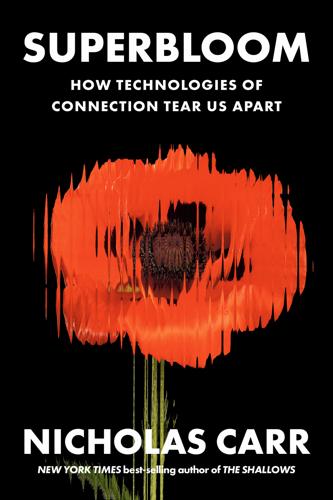
Superbloom: How Technologies of Connection Tear Us Apart
by
Nicholas Carr
Published 28 Jan 2025
Likely tied to Gen Z’s anxieties over climate change and the pandemic, anxieties themselves magnified by social media, the outbreak was, the researchers suggested, an “expression of a ‘culture-bound stress reaction’ ” in a society that promotes “attention-seeking behaviours.”38 The Tourette’s episode was not an isolated one. Ever since pro-anorexia, or “pro-ana,” content coursed through Tumblr after the platform’s founding in 2007, researchers have been investigating how “social media platforms may serve as a vehicle of transmission for social contagion,” according to a 2023 article in Comprehensive Psychiatry. The article’s authors, another group of psychiatric researchers, pointed to the apparent connection between the popularity on TikTok and other platforms of “plurals,” influencers who claim to have split personalities, and an upsurge in self-diagnoses of the rare condition among the young.
…
For a review, see Derek Thompson, “It Sure Looks Like Phones Are Making Students Dumber,” Atlantic, December 19, 2023. 38.Kirsten R Müller-Vahl et al., “Stop That! It’s Not Tourette’s but a New Type of Mass Sociogenic Illness,” Brain 145, no. 2 (2022): 476–480. 39.John D. Haltigan et al., “Social Media as an Incubator of Personality and Behavioral Psychopathology: Symptom and Disorder Authenticity or Psychosomatic Social Contagion?,” Comprehensive Psychiatry 121 (February 2023): 152362. 40.Amelia Lester, “Show Our Best Face,” Harvard Crimson, February 17, 2004. Lester would go on to become a magazine editor at The New Yorker and at Foreign Policy. Chapter 8: Machines Who Speak 1.Quoted in Ann Saddlemyer, Becoming George: The Life of Mrs.

You Are Not So Smart
by
David McRaney
Published 20 Sep 2011
After a year or so, the stories started to include new characters, totems, and ideas never present in the original, like the journey as a pilgrimage, or the death as a sacrifice. Memory is imperfect, but also constantly changing. Not only do you filter your past through your present, but your memory is easily infected by social contagion. You incorporate the memories of others into your own head all the time. Studies suggest your memory is permeable, malleable, and evolving. It isn’t fixed and permanent, but more like a dream that pulls in information about what you are thinking about during the day and adds new details to the narrative.
…
New York: St. Martin’s Griffin. Loftus, E. F., & Palmer, J. C. (1974). Reconstruction of automobile destruction: An example of the interaction between language and memory. Journal of Verbal Learning and Verbal Behavior 13, 585–589. Roediger, H. L. III, Meade, M. L., & Bergman, E. T. (2001). Social contagion of memory. Psychonomic Bulletin & Review 8(2), 365–371. Saletan, W. (2010, June 4). The Memory Doctor: The future of false memories. Slate. Retrieved December 2010 from http://www.slate.com/id/2256089/. Conformity Asch, S. E. (1956). Studies of independence and conformity: A minority of one against a unanimous majority.

The Sleeping Beauties: And Other Stories of Mystery Illness
by
Suzanne O'Sullivan
Published 31 Mar 2021
It’s likely that schools are particularly vulnerable to this disorder because they group people very closely, restricting their rights and limiting their autonomy. Young people’s brains are still developing and the adolescent years are those in which peer pressure is felt most keenly, making school-children at higher risk of social contagion. In the past, convents were also common sites for mass hysteria for the same sorts of reasons. Young women were isolated and subjected to extremely restricted lives, which is the atmosphere which fosters MPI. Other environments conducive to mass hysteria are those in which there is reason to worry about environmental poisons or attacks – factories, for example, especially those using potentially dangerous chemicals.
…
Publicly painting them in this disparaging way forced the girls and their families into a position of having to defend themselves; they emphasized that they did not experience their lives as being in any way bleak and therefore refused the diagnosis of conversion disorder. If having conversion disorder meant they were stressed, then it couldn’t be right. It is likely that, at the beginning of the outbreak, one of the girls began to genuinely suffer from a disorder like Tourette’s, and that the social contagion to which teenagers are vulnerable created the spread of tics within a friendship group. Responsibility for the subsequent evolution of the crisis, however, lies firmly at the feet of the media. In fact, it was withdrawing the girls from the media spotlight that finally saved them and the town.
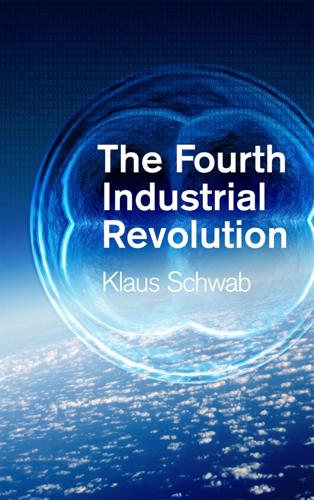
The Fourth Industrial Revolution
by
Klaus Schwab
Published 11 Jan 2016
The tools of the fourth industrial revolution enable new forms of surveillance and other means of control that run counter to healthy, open societies. Source: Global Risks Report 2016, World Economic Forum * * * As an example, a study of the impact of get-out-the-vote messages on Facebook found that they “increased turnout directly by about 60,000 voters and indirectly through social contagion by another 280,000 voters, for a total of 340,000 additional votes.”59 This research highlights the power that digital media platforms have in selecting and promoting the media we consume online. It also indicates the opportunity for online technologies to blend traditional forms of civic engagement (such as voting for local, regional or national representatives) with innovative ways to give citizens more direct influence over decisions that affect their communities.
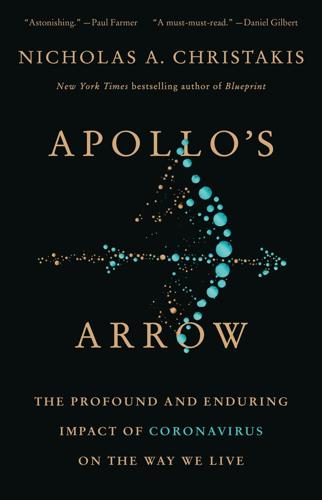
Apollo's Arrow: The Profound and Enduring Impact of Coronavirus on the Way We Live
by
Nicholas A. Christakis
Published 27 Oct 2020
For instance, when people flouted rules of mask-wearing or physical distancing in parts of the United States in May 2020, they reinforced one another’s perceptions of safety and control in a way that was counterproductive to their own interests and to those of our society.35 The large parties I saw in photographs taken in Missouri, Michigan, and Florida in June 2020 reminded me of a miniature version of the dancing manias seen long ago. As noted above, in the case of the possible parallel epidemics of a virus and of fear, there can be both biological and social contagions. People generally copy the visible behaviors of those around them, so there can be tipping points in both directions. As more and more people start to wear masks and obey rules of physical distancing, more people follow suit. Conversely, as more and more people ignore these practices, fewer people take them seriously.
…
Adults Report Less Worry, More Happiness,” Gallup, May 18, 2020, accessed May 24, 2020. 15 “Coronavirus Pandemic,” Gallup, accessed May 24, 2020. 16 M. Brenan, “Targeted Quarantines Top U.S. Adults’ Conditions for Normalcy,” Gallup, May 11, 2020, accessed May 24, 2020. 17 F. Fu et al., “Dueling Biological and Social Contagions,” Scientific Reports 2017; 7: 43634. 18 J.M. Epstein et al., “Couple Contagion Dynamics of Fear and Disease: Mathematical and Computational Explorations,” PLOS ONE 2008; 3: e3955. 19 S. Taylor, The Psychology of Pandemics, Newcastle upon Tyne: Cambridge Scholars Publications, 2020. 20 K. King, “Daily Cheers Give Morale Boost to Medical Workers Fighting Coronavirus,” Wall Street Journal, April 18, 2020; A.
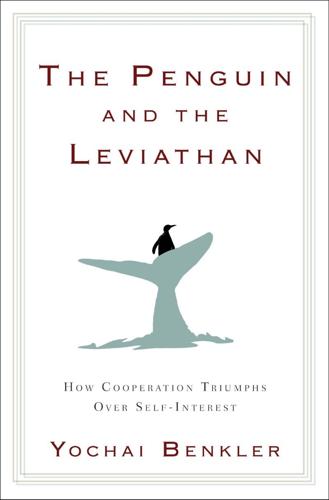
The Penguin and the Leviathan: How Cooperation Triumphs Over Self-Interest
by
Yochai Benkler
Published 8 Aug 2011
(Okay, maybe we should try pumping oxytocin into the air the next time the U.N. Security Council meets … interesting things might happen. But then again, it would more likely end up more in the ventilation systems of car dealership salesrooms than international treaty negotiations.) Social Capital, Reputation, and Social Contagion It turns out you can’t apply for a job as a New York City doorman. There are no want ads, no job postings, no online applications. As Peter Bearman showed a few years ago, becoming a doorman in New York “is both impossible and too easy.” Doormen in New York are recruited through social networks, and only from social networks.
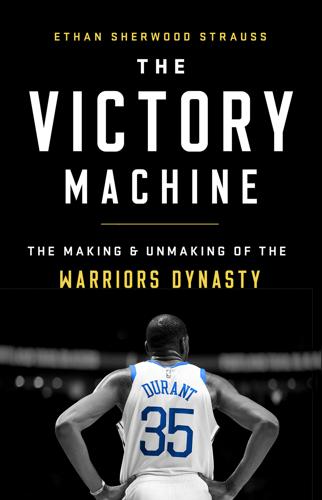
The Victory Machine: The Making and Unmaking of the Warriors Dynasty
by
Ethan Sherwood Strauss
Published 13 Apr 2020
By leaving Cleveland the first time, LeBron demonstrated a willingness to hurt local feelings in pursuit of happiness. The backlash was incredible but James ultimately survived, as did his reputation. The move gave LeBron leverage. Who could now doubt his willingness to leave at the drop of a hat? It also gave leverage to other superstars. A precedent had been set, which fueled a kind of social contagion among elite players. Unusually candid NBA veteran Jared Dudley told me over the phone, “I’m not surprised players almost want shorter contracts now. And because of that, players have more power. Players are flexing it. We’re doing that and it’s now gotten to a point where someone like Kawhi [can] change the game, say hey, I’m only playing sixty-five games and he’s telling you before.
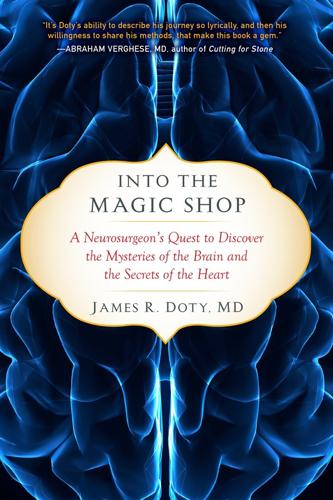
Into the Magic Shop: A Neurosurgeon's Quest to Discover the Mysteries of the Brain and the Secrets of the Heart
by
James R. Doty, Md
Published 2 Feb 2016
A desire to see others cared for with no desire for personal benefit or recognition. The extraordinary thing is that research is now finding that your act of kindness not only benefits those who receive your kindness but benefits you as well. The act of kindness ripples out and makes it more likely that your friends and those around you will be kinder. It is a social contagion that puts our society right. And ultimately kindness returns back to us, in the good feelings it generates and in how others treat us . . . with kindness. L: Love when given freely changes everyone and everything. It is love that contains all virtues. It is love that heals all wounds. Ultimately, it is not our technology or our medicine but our love that heals.

Dopamine Nation: Finding Balance in the Age of Indulgence
by
Anna Lembke
Published 24 Aug 2021
Unfortunately, the high didn’t last much beyond the time it took him to rip off the Amazon tape and see what was inside. He had rooms full of cheap consumer goods and was tens of thousands of dollars in debt. Even then, he couldn’t stop. To keep the cycle going, he resorted to ordering ever-cheaper goods—key chains, mugs, plastic sunglasses—and returning them immediately upon arrival. The Internet and Social Contagion Jacob decided not to end his life that day in the hotel. The very next week, his wife was diagnosed with brain cancer. They returned to their home country and he spent the next three years taking care of her until she died. In 2001, at age forty-nine, he reconnected with and married his high school sweetheart.
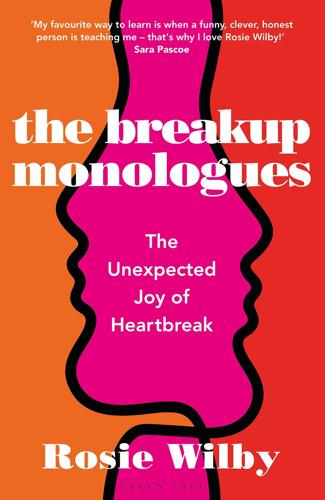
The Breakup Monologues: The Unexpected Joy of Heartbreak
by
Rosie Wilby
Published 26 May 2021
To be a lesbian in a romantic relationship is like perching anxiously at a cliff’s edge looking down to the wild seas of love addiction below…and wondering when you’ll be pulled back in. When I’m surrounded by the acrimonious wreckage of my friends’ partnerships, I begin to wonder if I’m misguided in my belief that Girlfriend and I will survive. Surely every time someone close to us breaks up, it increases the probability that we will? As the social contagion closes in, I become more reclusive. Nevertheless I feel an urge to make contact with Lena. But it’s tricky. A message will alert her that Becky has already told us about the split and presented her side of the story. I decide to go for it. ‘How are you? We heard about you and Becky and were really sad and surprised.
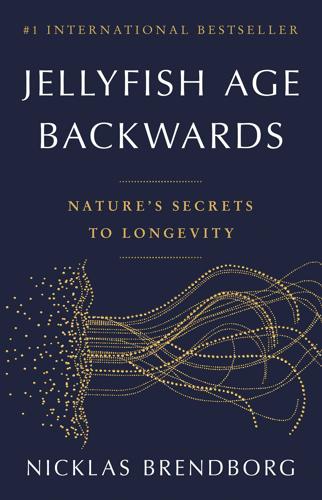
Jellyfish Age Backwards: Nature's Secrets to Longevity
by
Nicklas Brendborg
Published 17 Jan 2023
It seems Liz Parrish is the first person ever to successfully elongate her telomeres. Liz Parrish’s self-experiment caused an uproar in the scientific community. On one side, proponents argued that the self-experiment would provide valuable data for the rest of us. On the other side, critics considered the whole ordeal dangerous – reckless, even – and feared social contagion. Parrish herself has defended her position and has been quoted as saying: ‘To get US government approval to bring gene therapies to you… I would have to go raise almost a billion dollars. It would take about fifteen years of testing. And when I’m looking out there, I’m seeing people who don’t want to wait fifteen years.’

The Soul of Wealth
by
Daniel Crosby
Published 19 Sep 2024
If a friend of a friend of a friend is happy with their life, it can increase an individual’s likelihood of being happy by about 6%.92 Believing ourselves to be solitary and self-determined, we dramatically underestimate the power of social networks to encourage us to be healthy, happy, and yes, wealthy. Our social nature is what allows us to cooperate in ways unthinkable in the rest of the animal kingdom, but it also means that we are often as good, as bad, as happy, or as sad, as the people we surround ourselves with. Upon recognizing the power of social proof and social contagion on our overall health, wealth, and happiness, it becomes essential for those seeking a fulfilling and prosperous life to be mindful of their choice of friends. In return, it is equally important that we embody the qualities of a supportive and uplifting friend who can positively influence others along the way, setting in motion a virtuous cycle with far-reaching positive impacts
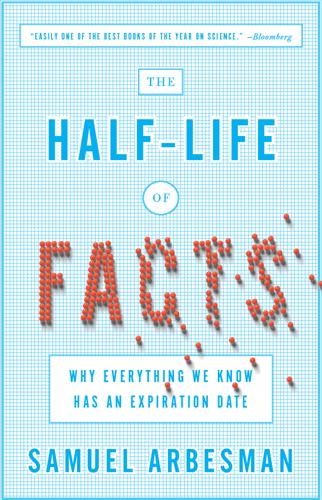
The Half-Life of Facts: Why Everything We Know Has an Expiration Date
by
Samuel Arbesman
Published 31 Aug 2012
Connected. The methodology in this research has been critiqued more recently. For details, see the following papers: VanderWeele, T. J. “Sensitivity Analysis for Contagion Effects in Social Networks.” Sociological Methods and Research 40 (2011): 240–55; Christakis, Nicholas A., and James H. Fowler. “Social Contagion Theory: Examining Dynamic Social Networks.” Statistics in Medicine 32, no. 4 (February 20, 2013): 556–77. 81 “[c]onclusions based on such work”: Gould, Stephen Jay. Bully for Brontosaurus: Reflections in Natural History. New York: W. W. Norton, 1992. 83–84 an article in the British Medical Journal: Hamblin, T.

The Buddha and the Badass: The Secret Spiritual Art of Succeeding at Work
by
Vishen Lakhiani
Published 14 Sep 2020
Video retrieved from www.facebook.com/watch/?v=1720981828166095. Pixar blurred the traditional lines between workers: Catmull, Ed. Creativity, Inc.: Overcoming the Unseen Forces That Stand in the Way of True Inspiration. Random House Canada, 2014. phenomenon which explains why we embrace religion: “Memetics and Social Contagion: Two Sides of the Same Coin?” Journal of Memetics—Evolutionary Models of Information Transmission, http://cfpm.org/jom-emit/1998/vol2/marsden_p.html (accessed December 2019). Google fails at 40 percent of everything they start: Levy, Steven. In the Plex: How Google Thinks, Works, and Shapes Our Lives.

Revenge of the Tipping Point: Overstories, Superspreaders, and the Rise of Social Engineering
by
Malcolm Gladwell
Published 1 Oct 2024
Politician #2: You’re using the passive voice there when you say it’s “been associated with abuse,” which implies somehow you and your family were not aware of exactly what was taking place… If you listen to all 3 hours and 39 minutes of the hearing, that single phrase stays in your head: “the passive voice.” 2. Twenty-five years ago, in The Tipping Point, I was fascinated by the idea that in social epidemics little things could make a big difference. I came up with rules to describe the internal workings of social contagions: the Law of the Few, the Power of Context, the Stickiness Factor. The laws of epidemics, I argued, could be used to promote positive change: lower crime rates, teach kids how to read, curb cigarette smoking. “Look at the world around you,” I wrote. “It may seem like an immovable, implacable place.
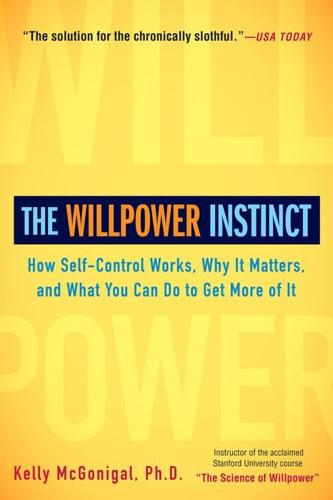
The Willpower Instinct: How Self-Control Works, Why It Matters, and What You Can Doto Get More of It
by
Kelly McGonigal
Published 1 Dec 2011
.: The Centers for Disease Control and Prevention statistics, www.cdc.gov/obesity/data/trends.html#State. Pages 185–186—Contagion of obesity: Christakis, N. A., and J. H. Fowler. “The Spread of Obesity in a Large Social Network over 32 Years.” New England Journal of Medicine 357 (2007): 370–79. Page 186—Social contagion studies: Fowler, J. H., and N. A. Christakis. “Estimating Peer Effects on Health in Social Networks: A Response to Cohen-Cole and Fletcher; and Trogdon, Nonnemaker, and Pais.” Journal of Health Economics 27 (2008): 1400–05. See also Rosenquist, J. N., J. Murabito, J. H. Fowler, and N. A. Christakis.
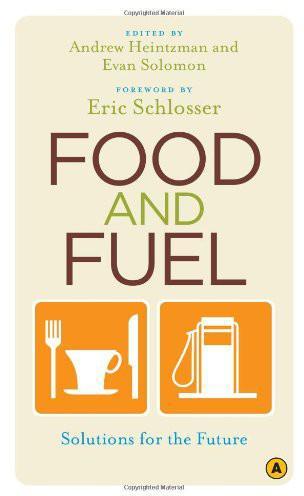
Food and Fuel: Solutions for the Future
by
Andrew Heintzman
,
Evan Solomon
and
Eric Schlosser
Published 2 Feb 2009
It insists that the environment should remain unchanged, that the food industry will do business as usual, and that pious government officials will continue to defend the status quo while claiming credit for taking action. The picture startlingly resembles the history of the tobacco industry, which argued that damage caused by dangerous products were the fault of the people who used them. BOTTOM-UP VERSUS TOP-DOWN PRIORITIES (CREATING SOCIAL CONTAGION) Will change occur from the top down, with central governments taking the lead? Or will it come from the bottom up, with grassroots, local, and state changes forcing central change? It appears that the victories are occurring in a bottom-up fashion in the United States, but in Europe and Scandinavia there is more hope for constructive action from the top.
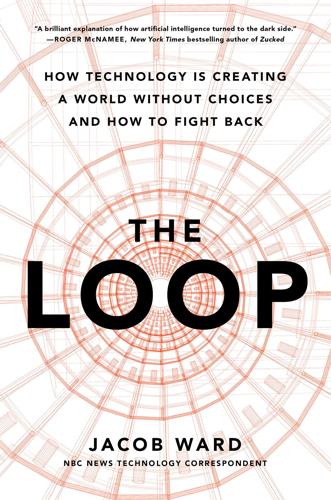
The Loop: How Technology Is Creating a World Without Choices and How to Fight Back
by
Jacob Ward
Published 25 Jan 2022
New York Times, www.nytimes.com/2018/06/22/opinion/the-worrisome-future-of-policing-technology.html 4. Lum, K., Isaac, W. (2016). To predict and serve? Significance, 13:14–19. doi: 10.1111/j.1740-9713.2016.00960.x 5. Papachristos, A.V., Wildeman, C., Roberto, E. (2015). Tragic, but not random: The social contagion of nonfatal gunshot injuries. Social Science & Medicine, Jan; 125:139–150. doi: 10.1016/j.socscimed.2014.01.056 6. Zhao, L., Papachristos, A.V. (2020). Network position and police who shoot. The Annals of the American Academy of Political and Social Science, 687(1):89–112. doi: 10.1177/0002716219901171 7.

Merchants of Truth: The Business of News and the Fight for Facts
by
Jill Abramson
Published 5 Feb 2019
The results laid bare the fearsome power of Facebook. In 2014 the company ran another experiment: it doctored the nature of the stories that appeared in the News Feed of 689,003 users so that they skewed either more negative or positive than normal, and from there tracked the spread of what it called social contagion. “These results indicate that emotions expressed by others on Facebook influence our own emotions, constituting experimental evidence for massive-scale contagion via social networks,” wrote the study’s principal investigator. Smith announced a powerful new partnership between BuzzFeed and Facebook that would give his newsroom (along with ABC News) exclusive access to the social network’s proprietary analytics, revealing how American users felt about various politicians, policies, and events.
…
.: of 2004, 20, 21 of 2008, 98, 99, 126 of 2012, 128–29, 131–33, 135–37 elections, U.S., of 2016, 2 BuzzFeed coverage of, 138, 313–17, 320 divisiveness of, 281 Facebook and, 303 fake news and, 320, 322 Russian interference in, 326, 341–42, 381, 382, 383 see also Clinton, Hillary, in 2016 election campaign; Trump, Donald, in 2016 election campaign Emanuel, Ari, 178 Emergent, 310 Emerson Collective, 343 emotional charge, of news stories, 111 Entous, Adam, 406, 411 Esquire, 268 Eyebeam, 18–19 Facebook, 6, 31–32, 106, 108, 132, 204, 275, 415 accused of liberal bias, 292–93 Audience Optimization Tool of, 282 beginnings of, 95–96 BuzzFeed added to list of trusted sources of, 317 BuzzFeed’s community-specific pages on, 337–38 BuzzFeed’s reliance on, 103, 104, 132, 153, 272, 276, 277, 295, 301, 303–4, 311, 329, 428 Cambridge Analytica and, 279, 298 conspiracy theory stories on, 296 constantly changing algorithms of, 105–6, 271–72, 282, 290–91, 295, 302, 329, 332, 337 criticized for lack of control over content, 154 Custom Audiences tool of, 298 dangerous omnipotence of, 400 Dark Post tool of, 298–99 data mining by, 271, 274, 278, 341 data security issues of, 279, 342, 400 decline of sharing on, 282 demographic of, 106–7 digital advertising dominated by, 7, 27, 254, 367, 397, 404, 428 emotional resonance as touchstone for, 273 expanded reach of publishers’ posts on, 291 explosive growth of, 31, 104 fake news spread by, 277, 289, 295, 296–97, 317, 322, 427–28 growing influence of, 274, 280, 303, 309 human editors controversy at, 291–94, 295–96, 317 Instant Articles on, 267, 280–81, 329–30, 412 Like button of, 107–8, 109 live-video streaming tool of, 314 news content on, 124 in pivot to video, 329, 332 political ads on, 278 political polarization and, 273–74, 279–80, 281, 282–83, 312 Post and, 96–97, 232–33 priority of friends vs. publishers’ posts on, 276, 281–82 psychographics and, 278–79 publishers and, 272–73 ranking of stories on, 275–77 Russian fake news spread by, 289, 341–42, 420 “sentiment data” of, 303–5 “social contagion” experiment of, 303 supposed neutrality of, 274 targeted advertising on, 277–78, 298, 341 Facebook (cont.) targeting of news stories by, 279–80, 281 trending section of, 291–94, 295–96, 317 Trump campaign’s use of psychographic data from, 298–99 unauthorized sharing of personal data by, 428 users’ burden of choice relieved by, 271–72, 273 users’ experience as priority of, 272 users’ given greater control over content on, 282 Facebook Effect, The (Kirkpatrick), 96 Facebook Live, 281, 412 Facebook worldview, Google worldview vs., 103 Fahrenthold, David, 408–11, 419 fake news, 80, 95, 212, 277, 320 appearance of authority in, 295 Facebook’s role in spread of, 289, 295, 296–97, 317, 322, 427–28 impact on 2016 election of, 320, 322 internet and, 386 Russian use of, 289, 341–42, 420 Silverman’s investigation of, 294–95, 296–98, 299, 309, 340–41 Trump campaign and, 277, 296, 297, 299–300 Trump’s co-opting of term, 340 and 2016 election, 322 virality of, 295 Fallon, Brian, 379, 380 Fallows, James, 252 Fear and Loathing on the Campaign Trail (Thompson), 133 Federal Trade Commission, native advertising and, 136–37 feedback, journalists’ craving for, 246 Ferrante, Anthony, 326 Ferraro, Nick, 424 Fiasco (Ricks), 230 financial crisis of 2008, 8, 62, 225, 227 Financial Times, 42, 336 paying digital readers of, 183, 192 Fiorina, Carly, 138 Fire and Fury (Wolff), 324 First Amendment, 8, 9, 226, 331, 424 Bezos as vigorous defender of, 257–58, 420–21 Fisher, Ian, 247 FiveThirtyEight, 190, 248 Fix, The (Post blog), 94, 239, 405 Flynn, Michael, 392, 416 Foer, Franklin, 417 Foley, James, 175 Forbes, 163 foreign correspondents, post-9/11 safety training of, 172–73 Founders, importance of free press to, 8, 9, 89, 424 4chan, 283, 299, 313, 353, 355 Fourth Estate, The (documentary), 374 Fox News, 58, 60, 80, 387, 420, 429 Frank, Ze, 19, 122, 333 as head of BuzzFeed Motion Pictures, 331–32, 333–34, 336–37 Frankel, Max, 429 Frank Stanton Award for Excellence in Communications, 180 Freedom of Information Act, 178 Freston, Tom, 20, 58, 152, 154–55, 159, 180 Friedman, Thomas, 1, 68, 411 Friendster, 37 Frons, Marc, 192 Fusion GPS, 323 Future of News Group, 76 Gannett chain, 182 Gara, Tom, 342–43, 344–45 Gateway Pundit, 338 Gawker, 23, 73, 138, 164, 316, 326 as Chartbeat client, 246–47 Vice’s low wages exposed by, 175 Geddes, John, 220 Geffen, David, 188 Geidner, Chris, 140 Gelb, Arthur, 75, 185 Gellman, Barton, 260 General Electric, 161 Gerth, Jeff, 389–90 Gibson, Janine: Abramson’s job offer to, 220–21, 222 at BuzzFeed, 224, 301 Gingrich, Newt, 20, 132 Gionet, Tim, 312 Girard, René, 273 Giuliani, Rudy, 316 Gizmodo, 292, 293 Gladwell, Malcolm, 19, 112 Glasser, Susan, 223 Globe and Mail, 48 Goldacre, Ben, 248 Golden, Michael, 65–66, 74, 81, 187, 202, 207, 211, 213, 394 Gonzalez, Claudia, 202 Good Morning, America (TV show), 146 Google, 6, 74 analytics program of, 244 criticized for lack of control over content, 154 digital advertising dominated by, 7, 27, 254, 367, 397, 404, 428 disruptive business model of, 26–27 9/11 attacks and, 28 Peretti’s gaming of search system of, 29, 30 top-down organization of information by, 104 YouTube bought by, 54, 153 Google News, 28–29 Google Trends, 38 Google worldview, Facebook worldview vs., 103 Government Accountability Office, 252 Government Communications Headquarters (British), 215 Graham, Donald E., 1–2, 66, 225, 228, 265 character and personality of, 82, 84 Coll’s plan for global digital expansion rejected by, 87 cuts to news staff by, 82, 88–89, 92 difficulty expressing a future vision of, 84–85, 97–98 digital and print news staffs kept separate by, 89, 97 diversification by, 82–83 Facebook investment offered by, 96–97 Harris and VandeHei’s proposal rejected by, 98 Kaiser’s proposals shelved by, 86 Kaplan defended by, 253 local news as focus of, 83, 85, 86, 87–88 named Washington Post publisher, 83 paywall instituted by, 254 Post reporting assignments of, 84 and sale of Post, 255–56, 257, 258–59 social media and, 232 U.S. invasion of Iraq promoted by, 92 Vietnam service of, 83 as Washington police officer, 83–84 Zuckerberg’s friendship with, 97, 257 Graham, Katharine, 9, 82, 97 as Post publisher, 225 Watergate scandal and, 261, 408 Graham, Mary, 84 Graham, Philip, 1, 83 Graham family: commitment to quality journalism of, 226 in decision to sell Post, 255–57, 261 Gray, Rosie, 130, 131, 313 Grayer, Jonathan, 90–92 Great Britain, Brexit vote in, 279 Green, Joshua, 285 Greenhouse, Linda, 66–67 Gregg, Arthur, 1, 65 Gregg, Gail, 65, 183 Gregory, David, 389 Guardian, 112, 141, 171, 219, 222, 298, 301, 319 Abramson’s column for, 224, 320–21, 382 Snowden scoop of, 214–15, 220, 260, 268 Gubarev, Aleksej, 327 Gullah people, 155 Haberman, Clyde, 374 Haberman, Maggie, 314, 374, 390 Trump’s relationship with, 388–89 Haik, Cory, 227, 232, 249, 250, 264, 266 Haile, Tony, 244–46, 247 Scroll founded by, 247 see also Chartbeat Halberstam, David, 3–4, 6, 376 Hall, Ellie, 143 Harmony Institute, 110 Harris, John, 97–98, 406 Politico founded by, 98–99 Harvard Business Review, 139 Harvard Crimson, 84 Hastings, Michael, 130, 132–33 hate literature, 43 HBO, 178 Vice news shows on, see Vice (HBO weekly show); Vice News Tonight Hearst, 103 Heekin-Canedy, Scott, 192 Henry, John and Linda, 259, 423 Here Comes Everybody (Shirky), 196 Herron, Liz, 203–4 Hersh, Josh, 351 Hiatt, Fred, 92 Hicks, Tyler, 208 Hill, Anita, 196 Hills, Steve, 89, 231–32, 251, 254–55 Hilton, Shani, 142, 332 Hippeau, Eric, 103 HIVE, 330–31 Hoedemækers, Casper, 47 Hoft, Jim, 338 Holderness, Cates, 145–46 Howard, Rebecca, as head of video, 217 How to Piss in Public (McInnes), 58 Huffington, Arianna, 20, 21–22, 29, 30, 285, 347 Huffington, Michael, 20 Huffington Post, 73, 197, 242, 283, 305 AOL’s acquisition of, 123 celebrity stories on, 23 failed live streaming project of, 347 founding of, 22–23, 33, 285 poorly paid news staff of, 25 readers’ enthusiasms as driver of content on, 24–25 rewritten news stories of, 28–30 “stickiness” of, 23, 30 unpaid bloggers on, 23–24, 25 Hughes, Chris, 95 Hull, Anne, 233 Hunt, Al, 195–96 Hurley, Chad, 53 Hylton, Antonia, 366 Ifill, Gwen, 407 Ikea, 52, 160–61 Independent, 119 Indian Ocean, 2004 tsunami in, 53 Information, the, 282 information explosion, 26 InfoWars, 324 Ingrassia, Larry, 205 Instagram, 332 Intel, 162–63 International Herald Tribune, 65, 81 Times’s purchase of Post’s share in, 66, 86 International New York Times, 211 international reporting, 10 internet: as alternative to corporate media, 18 alt-right movement and, 353 cats and, 36 conspiracy theories spread by, 283, 405 data mining as accepted part of, 271 explosion of social media on, 30–32 extremism on, 312–13 fake news and, 386 information explosion on, 26 measurement of traffic on, 243, 246; see also Chartbeat newspapers’ business model challenged by, 75–76 as news sewer, 193 platforms vs. content providers on, 153–54 readers’ expectations of free content on, 23–24, 25, 26 and speeding up of news cycle, 239–40 targeting of news stories on, 279–80, 281 and unbundling of newspapers, 52 Internet Research Agency, 341–42, 382 investigative journalism, 10, 301, 366, 408 by BuzzFeed News, 141, 301, 302, 345 cost of, 2 First Amendment protection of, 8, 9 at Post, 141, 230, 233, 408 scandalmongering and, 382–83 speeded-up news cycle as enemy of, 383 at Times, 141, 142, 205–7, 210, 408 iPhone, impact on digital news media of, 32–33, 95 Iraq War, 174 Post’s misreporting of lead-up to, 92–94, 95 Times’s misreporting of lead-up to, 3, 78–79, 92, 94, 95, 184 Isidore Newman School, 14–15 Isis, Vice documentary on, 174–75 Jackass (TV show), 51–52, 152 Jarvis, Jeff, 76, 193 Jewish Daily Forward, 125 Jindal, Bobby, 138 Jobs, Laurene Powell, 343 Jobs, Steve, 32, 95 Johnson, John, 19, 110 Jones, Alex, 324 Jones, Ellis, 176 Jones, Saeed, 345 Jonze, Spike, 180 advertising spots by, 52, 160–61 background and early career of, 50–51 Jackass created by, 51–52, 152 as Vice creative director, 57 and Vice’s move into video, 50, 56–57, 152 journalism, see investigative journalism; long-form journalism; news media Kaczynski, Andrew, 129, 131–32, 299, 317 Trump campaign covered by, 313–14, 316–17 Kahn, Joe, 208 Kaiser, Robert, 85–86, 89, 262 Kakutani, Michiko, 402 Kaminer, Ariel, 142 Kantor, Jodi, 210 Kantrowitz, Alex, 282 Kaplan, 83 and changed student-loan regulations, 252 Don Graham’s defense of, 253 government investigation of, 252–54 growth of, 90–91 plummeting revenues of, 254 Post newspaper revenues eclipsed by, 91 Post’s ownership of, 252 sales pitches of, 252–53 Kaplan, Peter, 127, 131 Kaplan, Stanley H., 90 Kardashian, Kim, 335 Karim, Jawed, 53 Kaus, Mickey, 94 Kay, Alan, 85 Keller, Bill, 29, 184, 193, 209, 429 Abramson’s relationship with, 195, 198 and blurring of line between editorial and business departments, 69–70 foreign news as strong suit of, 195 Marshall Project of, 237 news staff cuts by, 190–91 paywall on website favored by, 192, 193 retirement of, 194, 197, 198 as stickler for fairness in reporting, 66–67 Sulzberger Jr. and, 66, 67–68 as Times’s executive editor, 66, 187 and Times’s reporting scandals, 78–80 on use of metrics in editorial decisions, 242, 245 Kellner, Amy, 48 Kerry, John, in 2004 election, 20, 21 Kim Jong-il, 166 Kim Jong-un, 134, 167 Kirkpatrick, David, 96 Klein, Ezra, 239, 248, 266, 405 Kleinfield, N.

Digital Dead End: Fighting for Social Justice in the Information Age
by
Virginia Eubanks
Published 1 Feb 2011
Conceptually, computerized information systems in the social service system are not very different from invasive home visits by caseworkers, extensive case records, or evaluations in workhouses by “overseers of the poor.”1 Politically, the purposes of surveying the poor have largely stayed constant for three centuries: containment of alleged social contagion, evaluation of moral suitability for inclusion in public life and its benefits, and suppression of working people’s resistance and collective power. Practically, being lined up and poked for immunizations is not unlike having an embedded microchip scanned at the welfare office. Using marginalized people as test populations for technologies of state surveillance and control is not unique to the information age.

Everything Is Obvious: *Once You Know the Answer
by
Duncan J. Watts
Published 28 Mar 2011
So even if each one of your influencers can influence three other ordinary people, you will still need to find and influence a million of them, which is rather different from what the law of the few promises. As it turns out, there’s a solution to this problem as well, but it requires that we incorporate another related but distinct idea from network theory—that of social contagion. THE ACCIDENTAL INFLUENTIALS Contagion—the idea that information, and potentially influence, can spread along network ties like an infectious disease—is one of the most intriguing ideas in network science. As we saw in the last chapter, when everyone is being influenced by what other people are doing, surprising things can happen.
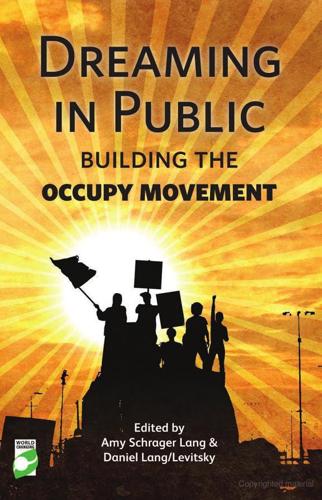
Dreaming in Public: Building the Occupy Movement
by
Amy Lang
and
Daniel Lang/levitsky
Published 11 Jun 2012
This statement, in particular, reflects the efforts of ‘a bunch of trans women occupiers’ to assert the necessity of moving from rhetorical gestures at inclusivity to actual practices of solidarity. Aaron Bady has consistently offered insights about the specifically urban settings of Occupy ever since Occupy Oakland established its downtown encampment. Here, he discusses the trope that merges political disruption and social contagion: the problem of ‘vermin’. The response – and lack of response – of radical communities to sexual violence has been a recurrent issue in US social-justice movements. The OWS Safer Spaces Working Group describes the general problem, and, by recounting their own approach to a particular sexual assault, offers a model to others.
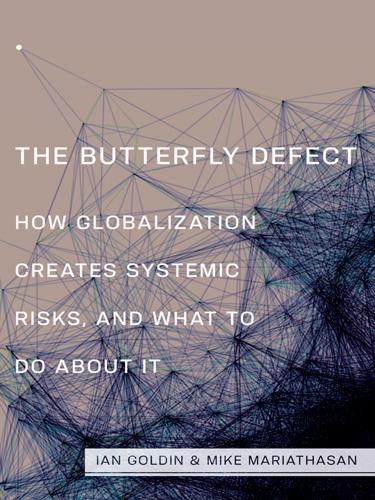
The Butterfly Defect: How Globalization Creates Systemic Risks, and What to Do About It
by
Ian Goldin
and
Mike Mariathasan
Published 15 Mar 2014
In the context of social networks in the financial world, there is evidence that “individual decision makers often pay attention to the actions, decisions, and even beliefs (such as risk perceptions) of others to whom they are linked socially.”16 It is precisely in this sense that we believe innovation and technology have also shaped the risk from contagious diseases; in addition to the physical channels of transmission, we need to be aware of the risks related to “‘social’ contagion.”17 An additional challenge is managing the dissemination of information about sensitive research. An example has been the debate surrounding the decision by the U.S. government to request that the leading scientific journals Nature and Science withhold the publication of research regarding the evolution of the H5N1 influenza virus.

Hate Inc.: Why Today’s Media Makes Us Despise One Another
by
Matt Taibbi
Published 7 Oct 2019
In retrospect, he wrote, the piece was the worst combination, i.e. good writing, bad facts: “One Time researcher assigned to my story remembers the study as ‘one of the more shameful, fear-mongering and unscientific efforts that we ever gave attention to.’” Nonetheless, the Time cover caused political figures like Ralph Reed and Chuck Grassley to spring into action demanding censorship of the Interwebs. Another early Time cover telling parents to worry about the impact of video games may not have predicted mass social contagion, but did hint at a future football star (“GRONK! FLASH! ZAP!”). There were constant variations on “techno-panic” themes, suggesting new technologies would addict children to profanity, violence, peeping, sexual deviancy, and other terrors. Moral panics tended to have the most profound consequences for “folk devils” who were politically underrepresented.

The Sirens' Call: How Attention Became the World's Most Endangered Resource
by
Chris Hayes
Published 28 Jan 2025
This particularly ritualized form of American savagery, which almost always ends in death for the perpetrator, is born, in each individual case, of a host of specific factors. But there’s no question that alongside the ready access to guns, the phenomenon of mass shootings is also the product of a kind of social contagion motivated by a dark desire for attention. In fact, an unnerving number of mass shooters begin their journey toward mass murder on message boards devoted to trolling, where a dark, sick, but legible line connects the desire to shock other “normies” by posting on the internet to the desire to shock them in the real world in a spectacular act of mass murder.[66] Each mass shooting creates new tragedy and trauma as well as a new dilemma for those who cover it.
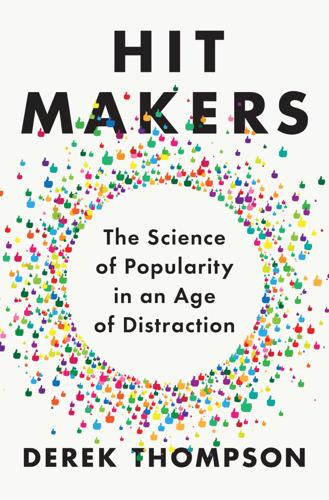
Hit Makers: The Science of Popularity in an Age of Distraction
by
Derek Thompson
Published 7 Feb 2017
Around the same time, Watts was on the phone with his dad, who asked if he’d ever heard of this idea that everyone in the world is connected to the president of the United States by just six handshakes. It was 1995, and Watts hadn’t heard the theory before. He didn’t know if it was obviously true or obviously false. But he started to think that crickets and the six degrees of separation were two parts of the same story. He wondered whether social contagions—like cricket sounds, clothing fashions, and pop culture hits—might be governed by the rules of mass behavior. Perhaps the fundamental question of hits isn’t “Why do we like what we like?” but rather “How does what you like become what I like?” One reason why I like Watts—even though, in our meeting, he relished poking holes in some of my theories—is that he is completely unsentimental about why some products succeed, and he’s very good at explaining the pitfalls of sentimental explanations.

Platform Revolution: How Networked Markets Are Transforming the Economy--And How to Make Them Work for You
by
Sangeet Paul Choudary
,
Marshall W. van Alstyne
and
Geoffrey G. Parker
Published 27 Mar 2016
In one study of 61 million Facebook users, news feeds with positive social pressure caused roughly 2 percent more people to vote or at least declare that they had voted relative to people who did not receive such messages. In fact, Facebook social messaging increased turnout directly by about 60,000 people and indirectly by about 280,000 more people via social contagion.50 While there is no evidence that election outcomes changed, one can imagine close races where a 2 percent margin affects who wins. It’s an interesting finding—one that Facebook advertisers and others seeking to influence the attitudes and behaviors of large numbers of people might find valuable.

The Economics of Enough: How to Run the Economy as if the Future Matters
by
Diane Coyle
Published 21 Feb 2011
The formal rules set by governments interact with informal ones to shape the economy. The effect of the informal, the social norms, shouldn’t be underestimated, as the example of the spread of greed in finance and big corporations and from there to the rest of society so clearly shows. Indeed economists have shown that there is a social contagion in many dimensions of life, such as obesity, crime, or suicide.6 Governments can influence social norms—examples of successful antismoking campaigns show how powerful government action can be. However, our own behavior as individuals, and our own social relationships, are important too. We can and should change our own patterns of spending.

Behave: The Biology of Humans at Our Best and Worst
by
Robert M. Sapolsky
Published 1 May 2017
Conformity relates to social and emotional contagion where, say, a primate aggressively targets an individual just because someone else is already doing so. Such contagion even works between groups. For example, among marmosets aggression in a group becomes more likely if aggressive vocalizations are heard from the neighboring group. Other primates are even subject to the social contagion of yawning.*52 My favorite example of nonhuman conformity is so familiar that it could come right out of high school. A male grouse courts a female who, alas, doesn’t feel magic in the air and rebuffs him. The researchers then make him seem like the hottest stud on the prairie—by surrounding him with some rapt, stuffed female grouse.
…
Stern et al., “Transitive Inference in Pigeons: Simplified Procedures and a Test of Value Transfer Theory,” Animal Learning & Behav 23 (1995): 76; A. B. Bond et al., “Social Complexity and Transitive Inference in Corvids,” Animal Behav 65 (2003): 479; L. Grosenick et al., “Fish Can Infer Social Rank by Observation Alone,” Nat 445 (2007): 429. 52. C. Watson and C. Caldwell, “Neighbor Effects in Marmosets: Social Contagion of Agonism and Affiliation in Captive Callithrix jacchus,” Am J Primat 72 (2010): 549; K. Baker and F. Aureli, “The Neighbor Effect: Other Groups Influence Intragroup Agonistic Behavior in Captive Chimpanzees,” Am J Primat 40 (1996): 283. 53. L. A. Dugatkin, “Animals Imitate, Too,” Sci Am 283 (2000): 67. 54.

The Divide: American Injustice in the Age of the Wealth Gap
by
Matt Taibbi
Published 8 Apr 2014
* * * *1 The Fairfax story is often included in with other legendary bear-raid stories involving companies like Overstock.com, Dendreon, Afinsa (a Spanish collectibles company), and Biovail, another Canadian firm, all of which were targeted by some of the same hedge funds described in this story, many of which ended up out of business and/or mired in scandal. Many of those tales revolve around the issue of naked short selling, a type of financial counterfeiting that allows short investors to artificially depress the stock prices of target companies. Whether naked short selling is a serious social contagion or meaningless conspiracy theory is a passionately debated topic on Wall Street, and to even broach the subject inspires strong emotions: right or wrong (and I believe wrong), in some quarters, if you bring it up at all, eyes roll automatically. One of the reasons I originally shied away from the Fairfax story was that it has a naked short-selling angle that makes some serious observers dismiss it out of hand as nutty conspiracy.
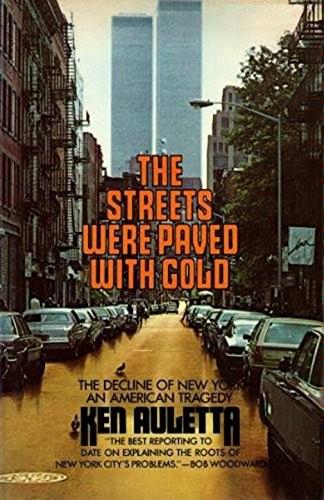
The Streets Were Paved With Gold
by
Ken Auletta
Published 14 Jul 1980
It’s the city’s changing ethnic mix, which makes some people uncomfortable, and the graffiti on the subways, the dirt on the streets and a lot of other things.” The company’s surveys found that “a substantial majority” of executives and managers, down to those earning $15,000 a year, wanted Union Carbide to move. It is difficult—no, dangerous—to ignore the economic and social contagion that has swept New York City. The contagion observes few borders. Between 1970 and 1975, New York State lost 2.5 percent of all its nonagricultural jobs. In that same period, the nation’s nonagricultural employment leaped 7.4 percent. The state’s economic stagnation, a 1977 report by Syracuse University economist Roy Bahl disclosed, meant the loss of $6 billion in potential tax revenues since 1973.

Nine Pints: A Journey Through the Money, Medicine, and Mysteries of Blood
by
Rose George
Published 22 Oct 2018
Much of the recruitment had taken place in the months before the war. At Slough, it helped that the depot was housed on the huge trading estate. Factory workers were approached on-site. Bleeding teams went into the countryside to recruit, with success. Around the country, regional depots were doing similar work. And there was also by now social contagion. Giving blood was an accepted social good. In 1939, when the first evacuees were sent from the city to the countryside, Londoners used to the idea of donation spread the notion. “In a Hampshire village,” reported the Times, “a London woman who has moved there was asked if she could obtain some more donors for the blood transfusion service.

Investing Amid Low Expected Returns: Making the Most When Markets Offer the Least
by
Antti Ilmanen
Published 24 Feb 2022
The second is extrapolative expectations on fundamentals or eventual overreaction to price moves due to positive-feedback trading (e.g. investors becoming more confident in their positions and beliefs when they are supported; becoming more risk averse or forced to delever after market declines; herding and social contagion). In addition, the disposition effect, which is the tendency for investors to sell winners too soon and hold on to losers too long, may contribute to momentum.16 Risk-based theories posit that high-momentum stocks are somehow riskier, for example, because they contain more growth options in earnings which makes them more sensitive to aggregate shocks.
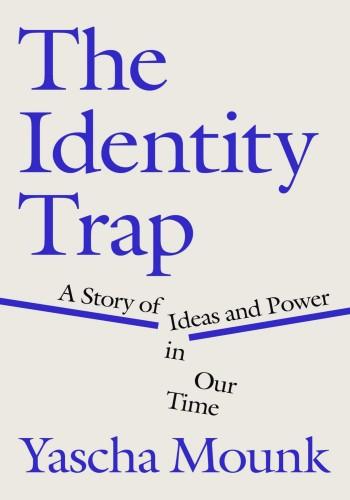
The Identity Trap: A Story of Ideas and Power in Our Time
by
Yascha Mounk
Published 26 Sep 2023
Once it became clear that the ACLU was willing to bend to the preferences of its younger staffers and the wishes of its progressive donors, other changes quickly followed. Since Charlottesville, the organization has increasingly taken up causes that stand in direct conflict to its historical mission. When Abigail Shrier argued that some forms of “social contagion” may be helping to drive a surge in teenage girls experiencing gender dysphoria in a controversial book, one senior ACLU staffer called for it to be banned. “Stopping the circulation of this book and these ideas is 100% a hill I will die on,” Chase Strangio, a deputy director at the ACLU’s LGBT & HIV Project, wrote on Twitter.

The Stuff of Thought: Language as a Window Into Human Nature
by
Steven Pinker
Published 10 Sep 2007
The caprice in the rise and fall of names, which are the most easily tracked bits of culture, suggests we should be skeptical of most explanations for the life cycles of other mores and customs, from why men stopped wearing hats to why neighborhoods become segregated. But it also points to the patterns of individual choice and social contagion that might someday make sense of them. WORDS AND EMOTIONS The shifting associations to the name for a person are an example of the power of a word to soak up emotional coloring—to have a connotation as well as a denotation. The concept of a connotation is often explained by the conjugational formula devised by Bertrand Russell in a 1950s radio interview: I am firm; you are obstinate; he is pigheaded.
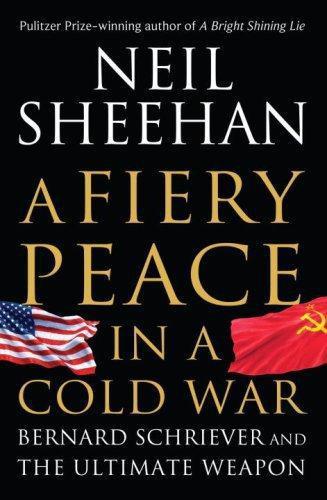
A Fiery Peace in a Cold War: Bernard Schriever and the Ultimate Weapon
by
Neil Sheehan
Published 21 Sep 2009
The idea that a man as respectful of American power as Stalin was would commit his badly wounded nation to a venture as foolhardy as the attempted destruction of the United States was ludicrous, but that is what many men in Washington wanted to hear. Having just triumphed over the expansionist monster Hitler and the forces of Imperial Japan, they seemed, unconsciously, to be seeking a new monster with whom to do mortal combat. The perception of Communism as some sort of international social contagion that could, by almost biological means, infect and destroy society was also widespread in the United States. If Russia was a society with a profound sense of insecurity, as Kennan maintained, America was equally so. Kennan’s Long Telegram was not only the longest in the history of the U.S. Foreign Service, it was also the most enthusiastically welcomed and widely read.

Facebook: The Inside Story
by
Steven Levy
Published 25 Feb 2020
“The results show that the messages directly influenced political self-expression, information seeking and real-world voting behaviour of millions of people,” wrote the authors, later adding, “The Facebook social message increased turnout directly by about 60,000 voters and indirectly through social contagion by another 280,000 voters, for total of 340,000 additional votes. That represents about 0.14% of the voting age population of about 236 million in 2010.” In a nation of close elections, such numbers could be decisive. Even more disturbing was the idea that Facebook could use that power to manipulate people to get the results it wanted.
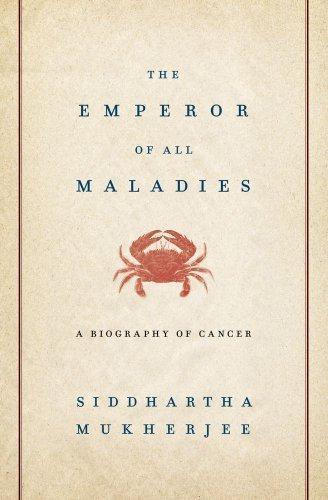
The Emperor of All Maladies: A Biography of Cancer
by
Siddhartha Mukherjee
Published 16 Nov 2010
When a disease insinuates itself so potently into the imagination of an era, it is often because it impinges on an anxiety latent within that imagination. AIDS loomed so large on the 1980s in part because this was a generation inherently haunted by its sexuality and freedom; SARS set off a panic about global spread and contagion at a time when globalism and social contagion were issues simmering nervously in the West. Every era casts illness in its own image. Society, like the ultimate psychosomatic patient, matches its medical afflictions to its psychological crises; when a disease touches such a visceral chord, it is often because that chord is already resonating.

The WEIRDest People in the World: How the West Became Psychologically Peculiar and Particularly Prosperous
by
Joseph Henrich
Published 7 Sep 2020
Philosophical Transactions of the Royal Society B: Biological Sciences 364 (1528), 2391–404. Bauer, M., Blattman, C., Chytilová, J., Henrich, J., Miguel, E., and Mitts, T. (2016). Can war foster cooperation? Journal of Economic Perspectives 30 (3), 249–74. Bauer, M., Cahlíková, J., Chytilová, J., and Želinský, T. (2018). Social contagion of ethnic hostility. Proceedings of the National Academy of Sciences 115 (19), 4881–86. Bauer, M., Cassar, A., Chytilová, J., and Henrich, J. (2014). War’s enduring effects on the development of egalitarian motivations and in-group biases. Psychological Science 25, 47–57. Baumard, N. (2018).

The Age of Surveillance Capitalism
by
Shoshana Zuboff
Published 15 Jan 2019
The Facebook experimenters determined that social messaging was an effective means of tuning behavior at scale because it “directly influenced political self-expression, information seeking and real-world voting behavior of millions of people,” and they concluded that “showing familiar faces to users can dramatically improve the effectiveness of a mobilization message.” The team calculated that the manipulated social messages sent 60,000 additional voters to the polls in the 2010 midterm elections, as well as another 280,000 who cast votes as a result of a “social contagion” effect, for a total of 340,000 additional votes. In their concluding remarks, the researchers asserted that “we show the importance of social influence for effecting behavior change… the results suggest that online messages might influence a variety of offline behaviors, and this has implications for our understanding of the role of online social media in society.…”6 The experiment succeeded by producing social cues that “suggested” or “primed” users in ways that tuned their real-world behavior toward a specific set of actions determined by the “experimenters.”

Strategy: A History
by
Lawrence Freedman
Published 31 Oct 2013
Chong’s model could not explain where the leaders came from. They acted “autonomously” and got engaged without being sure of success or followers. Once a start had been made with the acquisition of the first followers but prior to any tangible results, momentum developed as a result of a form of social contagion. This led to the conclusion, which might have been reached by more straightforward historical observation, that “strong organizations and effective leadership” combined with “symbolic and substantive concessions” from the authorities. In addition, it was wise to be cautious about being able to identify any “combination of objective factors in a society that will predictably set off a chain of events leading up to a collective movement.”25 The problem was not that the methods used in rational choice could not lead to intriguing and significant insights but that so many really interesting questions were begged.